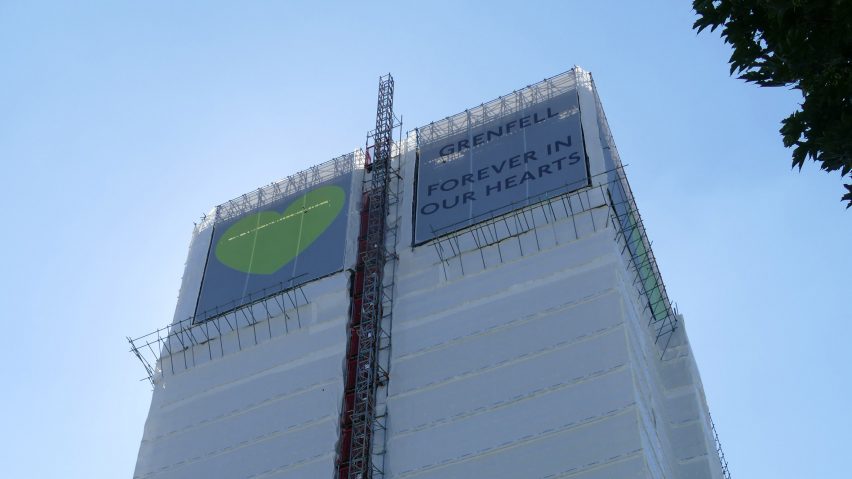The lead architect on the refurbishment of Grenfell Tower, which was completed the year before the building caught fire in 2017, has revealed that he was not aware of all the fire safety advice for tall buildings.
Bruce Sounes, an associate architect at Studio E responsible for managing the refurbishment of Grenfell Tower in 2015 and 2016, has told the enquiry into the fire that he had not read sections of Approved Document B – the fire safety advice laid out by the UK government's Building Regulations 2010.
Sounes gave evidence at the Grenfell Tower Inquiry on 2 to 4 March 2020.
Asked if he familiarised himself with the fire safety requirements in Approved Document B during the Grenfell Tower refurbishment project, Sounes said: "I can't recall doing so, no".
When asked if he read it at the time he added: "I referred to it on occasion, but I certainly didn't read it from start to finish, no."
Architect unaware of cladding fire risk
Sounes also did not read the document's specific fire safety guidance for buildings over 18 metres tall.
Asked if he had read this guidance he replied: "No, I was aware that they may exist, yes, but I myself did not refer to part B at the time."
Grenfell Tower, where 72 people died after its cladding system caught fire, was over 67 metres tall.
Sounes stated that he was also unaware of issues around the combustibility of aluminium cladding panels, which are increasingly used as exterior insulation in the push for more energy-efficient buildings.
"I thought their melting temperature was quite high," Sounes said of aluminium panels. "I was not aware they were combustible or a risk."
Sounes said he was aware of London's Lakanal House fire in 2009, where six people died. That inquest found that victims had been trapped when fire spread rapidly through the exterior cladding, but Sounes said he did not know that detail.
He had not heard about a series of tower cladding fires that had happened in Dubai between 2012 and 2015.
"Architects generally don't approve drawings"
Neil Crawford, another Studio E associate, took over the Grenfell Tower project in 2014. He was a witness at the Inquiry on 5 March.
Crawford, who had not completed his RIBA part 3 architecture qualification, said that his role was only to sign off on the "architectural intent" of drawings submitted by Harley facades for approval before construction.
"Specialist packages such as cladding, lifts, stairs, etc. would be completed by, and the primary responsibility of specialist subcontractors," Crawford told the inquiry.
"Architects generally don't approve drawings, they comment on them," he added.
It was not the responsibility of architects to check that the cladding system was compliant with building regulations, he said.
Refurbishment design made "crap situation worse"
Emails from Cate Cooney, senior consultant at materials testing company Exova, to her colleagues were read out to Sounes at the Inquiry. In the emails, Cooney said that Exova would have to "massage" Studio E's proposal to improve its fire safety.
"They are making an existing crap condition worse," she wrote. "It's a matter of working the worse bits out and making the new stuff work."
She said that Studio E's decision to add an extra level to the podium to add more flats to the building would put more stress on the only evacuation route down the tower's single staircase. She also noted that there were "no sprinklers wanted" by Studio E.
Sounes said he was unaware that Exova felt there was "a fundamental problem" with the designs.
He also said that Studio E did not seriously look into a sprinkler system for Grenfell Tower because Exova, as the fire safety expert, had not recommended them.
Studio E had no high rise experience
Andrzej Kuszell, a founding member of Studio E, who set up the architecture firm in 1994, confirmed that his practice considered the "environmental impacts of our buildings" and was familiar with the products used to improve a building's thermal performance.
Kuszell defended the fact that his practice had no experience with high-rise buildings before taking on the Grenfell Tower refurbishment.
"The issue of whether a project poses new challenges is not, I think – if that is the implication, that somehow we were not capable of doing the project, I think that is false," Kuszell told the inquiry on 2 March.
"Because clearly every project, in your experience, there comes a point when every project is a first, and we had actually been dealing with projects of quite some sophistication and complexity as firsts."
Kuszell confirmed that the refurbishment project's budget of £8.5 million was lower than the budgets of between £15 and £30 million on the schools and leisure projects it specialised in.
Studio E sorry for fire deaths
Speaking to the bereaved and survivors attending the Inquiry, and to his team, Kuszell apologised for the fire,
He said he was "really, really sorry" for the tragedy, and criticised government fire safety rules for not being strong enough.
Kuszell said: "If we had understood that the building regulations were not robust, if we had understood that we can't trust a certification, if we had understood that advice that was being given from parties who were either specialists or marketing products were that unreliable and misleading – this is so sad to say, but I don’t think this tragedy would have happened."
The first phase of the inquiry concluded with its chair Martin Moore-Bick stating that there was "compelling evidence" the tower did not comply with building regulations on how external walls should not allow fire to spread.
"On the contrary, they actively promoted it," he said.

